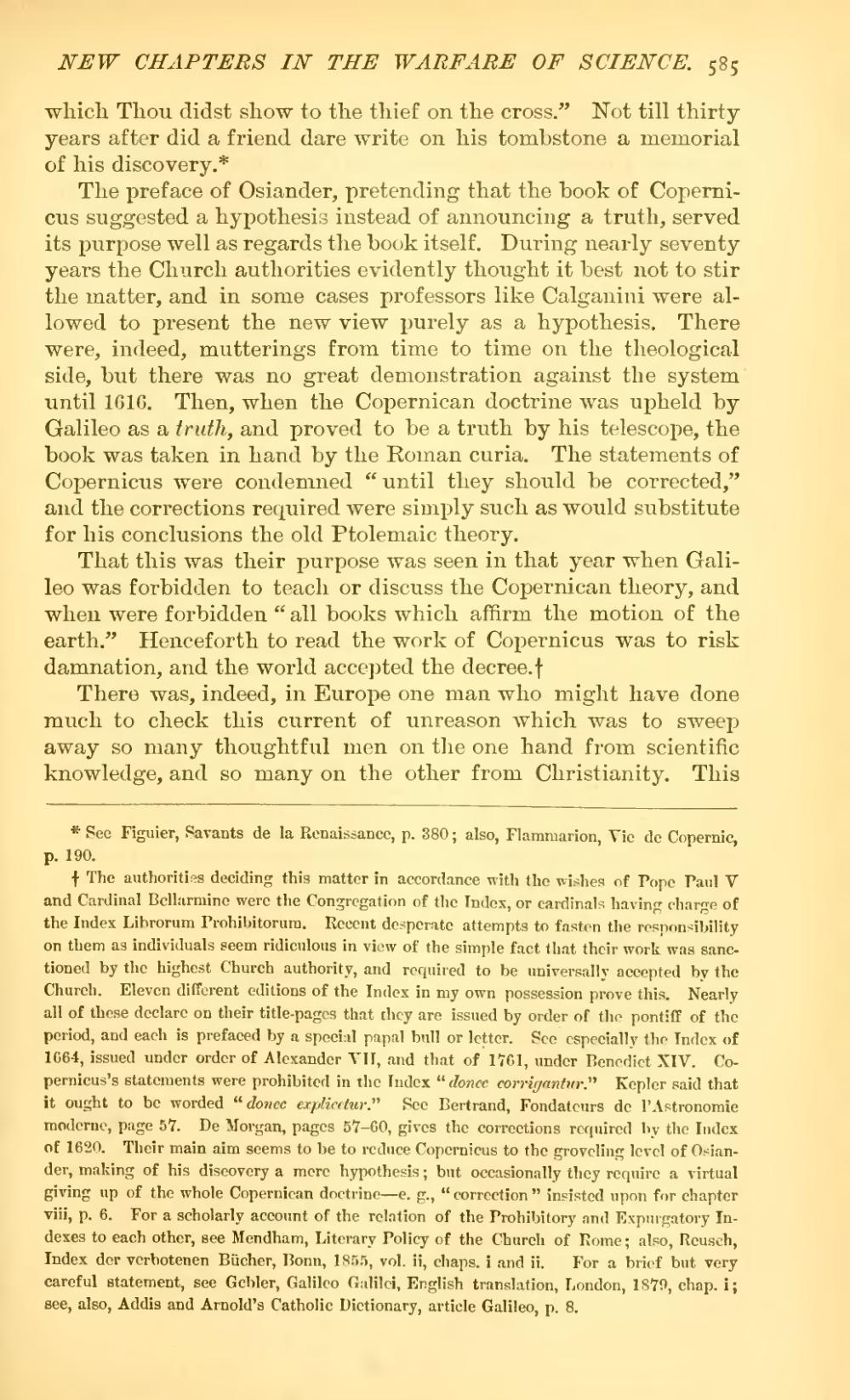which Thou didst show to the thief on the cross." Not till thirty years after did a friend dare write on his tombstone a memorial of his discovery.[1]
The preface of Osiander, pretending that the book of Copernicus suggested a hypothesis instead of announcing a truth, served its purpose well as regards the book itself. During nearly seventy years the Church authorities evidently thought it best not to stir the matter, and in some cases professors like Calganini were allowed to present the new view purely as a hypothesis. There were, indeed, mutterings from time to time on the theological side, but there was no great demonstration against the system until 1616. Then, when the Copernican doctrine was upheld by Galileo as a truth, and proved to be a truth by his telescope, the book was taken in hand by the Roman curia. The statements of Copernicus were condemned "until they should be corrected," and the corrections required were simply such as would substitute for his conclusions the old Ptolemaic theory.
That this was their purpose was seen in that year when Galileo was forbidden to teach or discuss the Copernican theory, and when were forbidden "all books which affirm the motion of the earth." Henceforth to read the work of Copernicus was to risk damnation, and the world accepted the decree.[2]
There was, indeed, in Europe one man who might have done much to check this current of unreason which was to sweep away so many thoughtful men on the one hand from scientific knowledge, and so many on the other from Christianity. This
- ↑ See Figuier, Savants de la Renaissance, p. 380; also, Flammarion, Vie de Copernic, p. 190.
- ↑ The authorities deciding this matter in accordance with the wishes of Pope Paul V and Cardinal Bellarmine were the Congregation of the Index, or cardinals having charge of the Index Librorum Prohibitorum. Recent desperate attempts to fasten the responsibility on them as individuals seem ridiculous in view of the simple fact that their work was sanctioned by the highest Church authority, and required to be universally accepted by the Church. Eleven different editions of the Index in my own possession prove this. Nearly all of these declare on their title-pages that they are issued by order of the pontiff of the period, and each is prefaced by a special papal bull or letter. See especially the Index of 1664, issued under order of Alexander VII, and that of 1761, under Benedict XIV. Copernicus's statements were prohibited in the Index "donee corrigantur." Kepler said that it ought to be worded "donee explicetur." See Bertrand, Fondateurs de l'Astronomie moderne, page 57. De Morgan, pages 57–60, gives the corrections required by the Index of 1620. Their main aim seems to be to reduce Copernicus to the groveling level of Osiander, making of his discovery a mere hypothesis; but occasionally they require a virtual giving up of the whole Copernican doctrine—e. g., "correction" insisted upon for chapter viii, p. 6. For a scholarly account of the relation of the Prohibitory and Expurgatory Indexes to each other, see Mendham, Literary Policy of the Church of Rome; also, Reusch, Index der verbotenen Bücher, Bonn, 1855, vol. ii, chaps. i and ii. For a brief but very careful statement, see Gebler, Galileo Galilei, English translation, London, 1879, chap. i; see, also, Addis and Arnold's Catholic Dictionary, article Galileo, p. 8.
